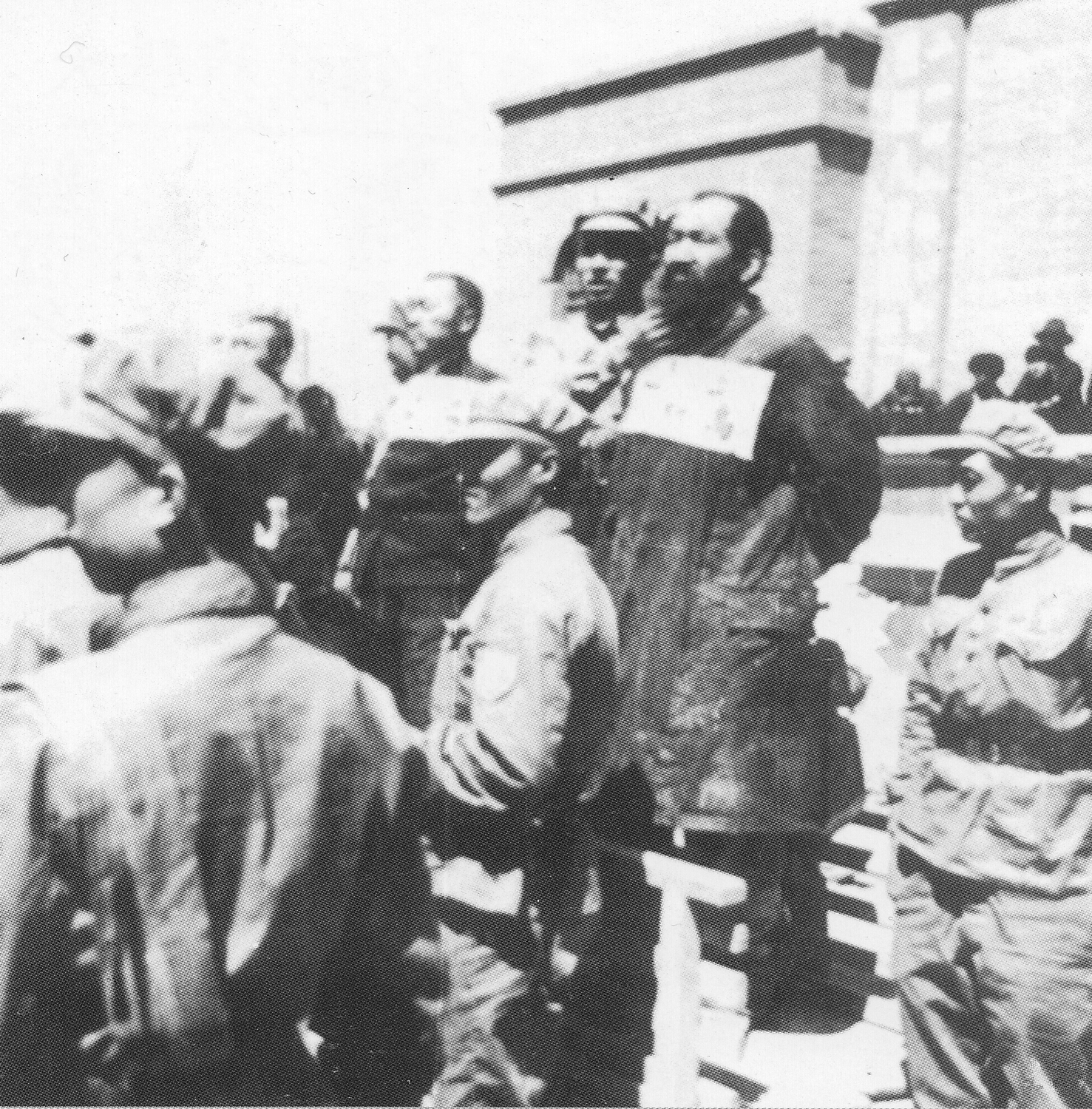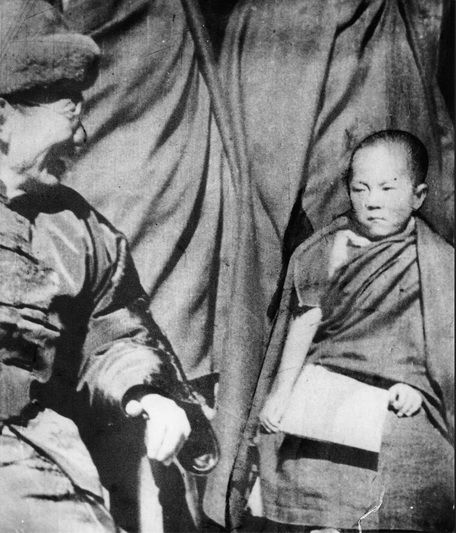|
Coalition Government Of Xinjiang Province
The Coalition Government of Xinjiang Province ( zh, t=新疆省聯合政府, p=Xīnjiāng Shěng Liánhé Zhèngfǔ) was the governing body of China's Xinjiang Province from 1946 to 1947. It was formed after a Soviet-brokered peace agreement between the Republic of China (ROC) and the breakaway Second East Turkestan Republic (ETR). The dissolution of the ETR coincided with the establishment of the coalition government; however, the interests of the ETR's former leaders were retained through the subordinate Ili District Council. The coalition government collapsed after the withdrawal of the former ETR side, which opposed the appointment of Masud Sabri, a pro-Kuomintang conservative, as the provincial chairman. Despite himself being a Turkic Uyghur, Sabri undid the pro-Turkic reforms implemented by his predecessor Zhang Zhizhong. Background During the Republican Era in China (1912–1949), Xinjiang was ''de jure'' governed as a province divided into ten districts. In actuality, h ... [...More Info...] [...Related Items...] OR: [Wikipedia] [Google] [Baidu] |
Republic Of China (1912–1949)
The Republic of China (ROC) began on 1 January 1912 as a sovereign state in mainland China following the 1911 Revolution, which overthrew the Manchu people, Manchu-led Qing dynasty and ended China's imperial China, imperial history. From 1927, the Kuomintang (KMT) Northern expedition, reunified the country and initially ruled it as a one-party state with Nanjing as the national capital. In 1949, Nationalist government, the KMT-led government was defeated in the Chinese Civil War and lost control of the mainland to the Chinese Communist Party (CCP). The CCP Proclamation of the People's Republic of China, established the People's Republic of China (PRC) while the ROC was forced to Retreat of the government of the Republic of China to Taiwan, retreat to Taiwan; the ROC retains control over the Taiwan Area, and political status of Taiwan, its political status remains disputed. The ROC is recorded as a founding member of both the League of Nations and the United Nations, and previous ... [...More Info...] [...Related Items...] OR: [Wikipedia] [Google] [Baidu] |
Tacheng
TachengThe official spelling according to (), also known as Tarbagatay, Chuguchak or Qoqek, is a county-level city and the administrative seat of Tacheng Prefecture, in northern Ili Kazakh Autonomous Prefecture, Xinjiang. The Chinese name "Tacheng" is an abbreviation of "Tarbagatay City", a reference to the Tarbagatay Mountains. Tacheng is located in the Dzungarian Basin, some from the Chinese border with Kazakhstan. For a long time it has been a major center for trade with Central Asia because it is an agricultural hub. Its industries include food processing, textiles, and utilities. History In the mid-19th century, Chuguchak was considered the most important commercial center of Western China after Ghulja (Yining), being an important center of trade between China and Russia, in particular in tea. The city, surrounded by an earth wall, was the residence of two Qing ambans and had a garrison of some 1,000 Chinese soldiers and 1,500 Manchu and Mongol soldiers. Chuguchak suffe ... [...More Info...] [...Related Items...] OR: [Wikipedia] [Google] [Baidu] |
Isa Yusuf Alptekin
Isa Yusuf Alptekin (1901 – 17 December 1995) was an Uyghur politician who served in the Chinese Nationalist government and opposed both the First East Turkistan Republic and the Second East Turkestan Republic. When Xinjiang came under Chinese communist control in 1949, Alptekin went into exile and became an ultra-nationalist and pan-Turkic separatist. Biography He was born in 1901 in Yengisar County, Kashgar, Qing dynasty. Aliptekin began his political career working as a translator and interpreter at the Chinese consulate in Andijan from 1926 to 1928. While working in Andijan, Alptekin met with Uyghur merchants who sought his counsel on whether to agree with Soviet plans to arm Uyghurs and liberate East Turkistan from Chinese control. Alptekin immediately notified the Chinese consul of the plot. In 1928, Aliptekin was praised for his work and tasked with escorting a Chinese diplomat who had fallen very ill (Peking). In the fall of 1928, Alptekin was posted to Tashkent whe ... [...More Info...] [...Related Items...] OR: [Wikipedia] [Google] [Baidu] |
Muhammad Amin Bughra
Muhammad Amin Bughra (also Muḥammad Amīn Bughra; , ; ), sometimes known by his Han name Mao Deming () and his Turkish name Mehmet Emin Buğra (1901–1965), was an Uyghur Muslim leader who planned to set up a sovereign state, the First East Turkestan Republic. Muhammad Amin Bughra was a Jadidist. Life In the spring of 1937, rebellion again broke out in Southern Sinkiang. A number of factors contributed to the outbreak. In an effort to appease the Turkic Muslims, Sheng Shicai had appointed a number of their non-secessionist leaders, including Khoja Niyaz Hajji and Yulbars Khan, another leader of the Kumul uprising (February 20, 1931- November 30, 1931), to positions of influence in the provincial government, both in Di Hua (modern Ürümqi) and Kashgar. At the same time, educational reforms, which attacked basic Islamic principles and the atheistic propaganda program, which was being extended into the south, were further alienating the local population from Sheng's ... [...More Info...] [...Related Items...] OR: [Wikipedia] [Google] [Baidu] |
Osman Batur
Osman Batur (1899 – April 29, 1951) also known mononymously as Osman was a Kazakh military leader active in the Altai Mountains. He led a personal army of fellow Kazakhs and fought alongside the Soviet-backed Second East Turkestan Republic, before defecting to the Nationalist forces of the Republic of China. Career Osman was born Osman Islamuly (also translated as Osman Islam) in 1899 in Öngdirkara, in the Köktogay region of Altay. He was the son of Islam Bey, a middle-class farmer, and Kayşa (Ayşa). Osman came to be known mononymously as "Osman"; his allies gave him the honorific '' Batur'', meaning "hero". During the 1930s, he was a little-known gang leader. In 1940, Osman became one of the leaders of the Kazakh uprising in the Altay district against Soviet-aligned governor Sheng Shicai. The rebellion was caused by the transfer of pastures and watering places to Dungans and Han Chinese settlers. When Sheng aligned himself with the Kuomintang government, Stalin, although ... [...More Info...] [...Related Items...] OR: [Wikipedia] [Google] [Baidu] |
East Turkestan National Army
The East Turkestan National Army () was the armed forces of the Second East Turkestan Republic (ETR). It was active from 1945 to 1949, beyond the dissolution of the ETR in 1946, when it was renamed the Ili National Army (INA; zh, t=伊犁民族軍) per a peace agreement between the ETR leadership and representatives of the Republic of China. It originally consisted of six regiments: the Suidun Infantry Regiment, the Ghulja Regiment, the Kensai Regiment, the Ghulja Reserve Regiment, the Kazakh Cavalry Regiment, the Dungan Regiment, the Artillery Subdivision, the Sibo Subdivision, and the Mongol Subdivision. The last two subdivisions were later reformed to regiments. All regiments were armed with mostly German-made weapons that were provided by the Soviet Union on orders by Joseph Stalin. Its personnel was trained in the Soviet Union. Rebel aviation included 42 airplanes, which were captured in the Ghulja Kuomintang air base and repaired by Soviet military personnel. History ... [...More Info...] [...Related Items...] OR: [Wikipedia] [Google] [Baidu] |
Wu Zhongxin
Wu Zhongxin, or Wu Chung-hsin (; March 15, 1884 – December 16, 1959) was a General and government official of the Republic of China. He was associated with the CC Clique. In his tenure as the Chairman of the Mongolian and Tibetan Affairs Commission of the Republic of China, Wu was present at the enthronement of the 14th Dalai Lama. From late 1944 until early 1946 he was one of the few KMT governors of Xinjiang Xinjiang,; , SASM/GNC romanization, SASM/GNC: Chinese postal romanization, previously romanized as Sinkiang, officially the Xinjiang Uygur Autonomous Region (XUAR), is an Autonomous regions of China, autonomous region of the China, People' .... Footnotes {{DEFAULTSORT:Wu, Zhongxin 1884 births 1959 deaths National Revolutionary Army generals from Anhui Republic of China politicians from Anhui Politicians from Hefei Chinese police officers Taiwanese people from Anhui ... [...More Info...] [...Related Items...] OR: [Wikipedia] [Google] [Baidu] |
Yalta Conference
The Yalta Conference (), held 4–11 February 1945, was the World War II meeting of the heads of government of the United States, the United Kingdom, and the Soviet Union to discuss the postwar reorganization of Germany and Europe. The three states were represented by President Franklin D. Roosevelt, Prime Minister Winston Churchill, and General Secretary Joseph Stalin. The conference was held near Yalta in Crimea, Soviet Union, within the Livadia, Yusupov, and Vorontsov palaces. The aim of the conference was to shape a postwar peace that represented not only a collective security order, but also a plan to give self-determination to the liberated peoples of Europe. Intended mainly to discuss the re-establishment of the nations of war-torn Europe, within a few years, with the Cold War dividing the continent, the conference became a subject of intense controversy. Yalta was the second of three major wartime conferences among the Big Three. It was preceded by the Tehran Confe ... [...More Info...] [...Related Items...] OR: [Wikipedia] [Google] [Baidu] |
Second ETR (within China)
The second (symbol: s) is a unit of time derived from the division of the day first into 24 hours, then to 60 minutes, and finally to 60 seconds each (24 × 60 × 60 = 86400). The current and formal definition in the International System of Units (SI) is more precise: The second ..is defined by taking the fixed numerical value of the caesium frequency, Δ''ν''Cs, the unperturbed ground-state hyperfine transition frequency of the caesium 133 atom, to be when expressed in the unit Hz, which is equal to s−1. This current definition was adopted in 1967 when it became feasible to define the second based on fundamental properties of nature with caesium clocks. As the speed of Earth's rotation varies and is slowing ever so slightly, a leap second is added at irregular intervals to civil time to keep clocks in sync with Earth's rotation. The definition that is based on of a rotation of the earth is still used by the Universal Time 1 (UT1) system. Etymology "Minute" comes ... [...More Info...] [...Related Items...] OR: [Wikipedia] [Google] [Baidu] |
Anti-imperialist
Anti-imperialism in political science and international relations is opposition to imperialism or neocolonialism. Anti-imperialist sentiment typically manifests as a political principle in independence struggles against intervention or influence from a global superpower, as well as in opposition to colonial rule. Anti-imperialism can also arise from a specific economic theory, such as in the Leninist interpretation of imperialism (Vladimir Lenin's theory of surplus value being exported to less developed nations in search of higher profits, eventually leading to imperialism), which is derived from Lenin's 1917 work '' Imperialism, the Highest Stage of Capitalism''. People who categorize themselves as anti-imperialists often state that they are opposed to colonialism, colonial empires, hegemony, imperialism and the territorial expansion of a country beyond its established borders. The phrase gained a wide currency after the Second World War and at the onset of the Cold War as po ... [...More Info...] [...Related Items...] OR: [Wikipedia] [Google] [Baidu] |
First East Turkestan Republic
The Turkic Islamic Republic of East Turkestan (TIRET) was a breakaway state centered on the city of Kashgar, located in the far west of China's Xinjiang Province, Republic of China, Xinjiang Province. It is often described as the First East Turkestan Republic to differentiate it from the Second East Turkestan Republic (1944–1946) established a decade later. It emerged from the Kumul Rebellion following the abolition of the semi-autonomous Kumul Khanate by Xinjiang Governor Jin Shuren. Lasting from 12 November 1933 to 16 April 1934, it was primarily the product of a Pan-Turkism, pan-Turkic independence movement in the region, which consisted of Turkic peoples, Turkic, mostly Uyghurs, Uyghur, intellectuals. With the sacking of Kashgar in 1934 by Hui people, Hui warlords nominally allied with the Kuomintang-led nationalist government in Nanjing, the TIRET was effectively destroyed. Its example, however, served to some extent as inspiration for the founding of the Second East Tu ... [...More Info...] [...Related Items...] OR: [Wikipedia] [Google] [Baidu] |




